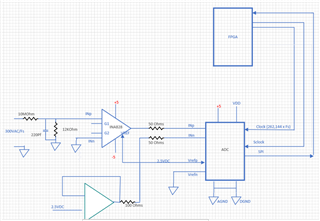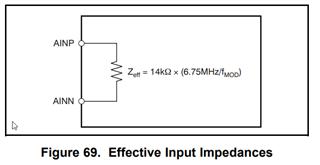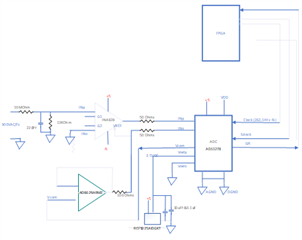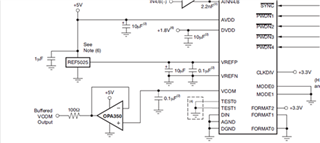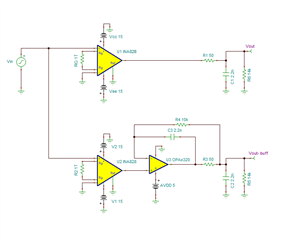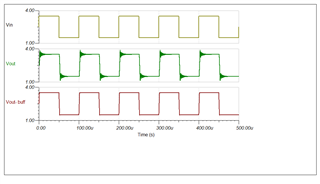Other Parts Discussed in Thread: INA828, OPA320
Hi,
We are injecting 300Vrms AC signal. When changing input AC signal frequency from 40Hz to 60Hz (without changing the input value) we noticed that the ADC value RMS is changing
We are using INA 828 connected directly to ADS1278 as described below
Now note that the clock to the ADC is derived from the frequency of the signal so we can have 1024 samples in one cycle
What we see is that when the Fs is changing then the value read from ADC is changing as well
WHY???
